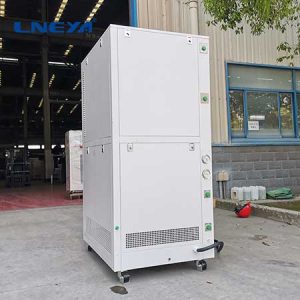What is the correct method for testing the lab chiller?
(1) . The internal surface of the FL +5°C ~ +35°C Water Chillers is tested by visual endoscope;
(2) . Rapid detection: less than 10 seconds for each pipe;

(3) . Suitable for elliptical tube, square tube, spiral tube, fin tube and bending from 9/16 “diameter;
(4) . Check whether the cooler in the laboratory has leakage, full and partial blockage, erosion and pitting;
(5) . APR (acoustic pulse reflection method), an innovative nondestructive testing technology, is based on the analysis of multi-dimensional sound waves generated in the cooler of the analytical laboratory.
1. What should be paid attention to in the daily inspection of the laboratory cooler?
After the cooler is put into use, the operator shall regularly patrol the heat exchanger to determine whether it operates normally.

(1) Check the process parameters. It is strictly prohibited to operate at excessive temperature and pressure.
(2) Check whether there is leakage in the spacer, cauldron and interface flange.
(3) Check the stability of the foundation support.
(4) Check the vibration of cooler and pipeline.
(5) Regularly check the oil color and temperature change after heat exchange.

2. What should be paid attention to during the routine maintenance of the laboratory cooler?
Most of the cooling water in the cooler contains calcium, magnesium ion and acid carbonate. When the cooling water flows through the metal surface, there is carbonate formation. In addition, oxygen dissolved in cooling water will also cause metal corrosion and form rust. Due to the formation of rust, the heat exchange effect is reduced.
In severe cases, cooling water has to be sprayed outside the shell. In severe cases, the pipe will be blocked and the heat exchange effect will be lost. The research data shows that the scale deposits have a huge impact on the loss of heat transfer. The increase of the deposits will cause the increase of energy costs, save energy, extend the service life of equipment, and save production time and costs.
 LNEYA
LNEYA
 简体中文
简体中文


















































































